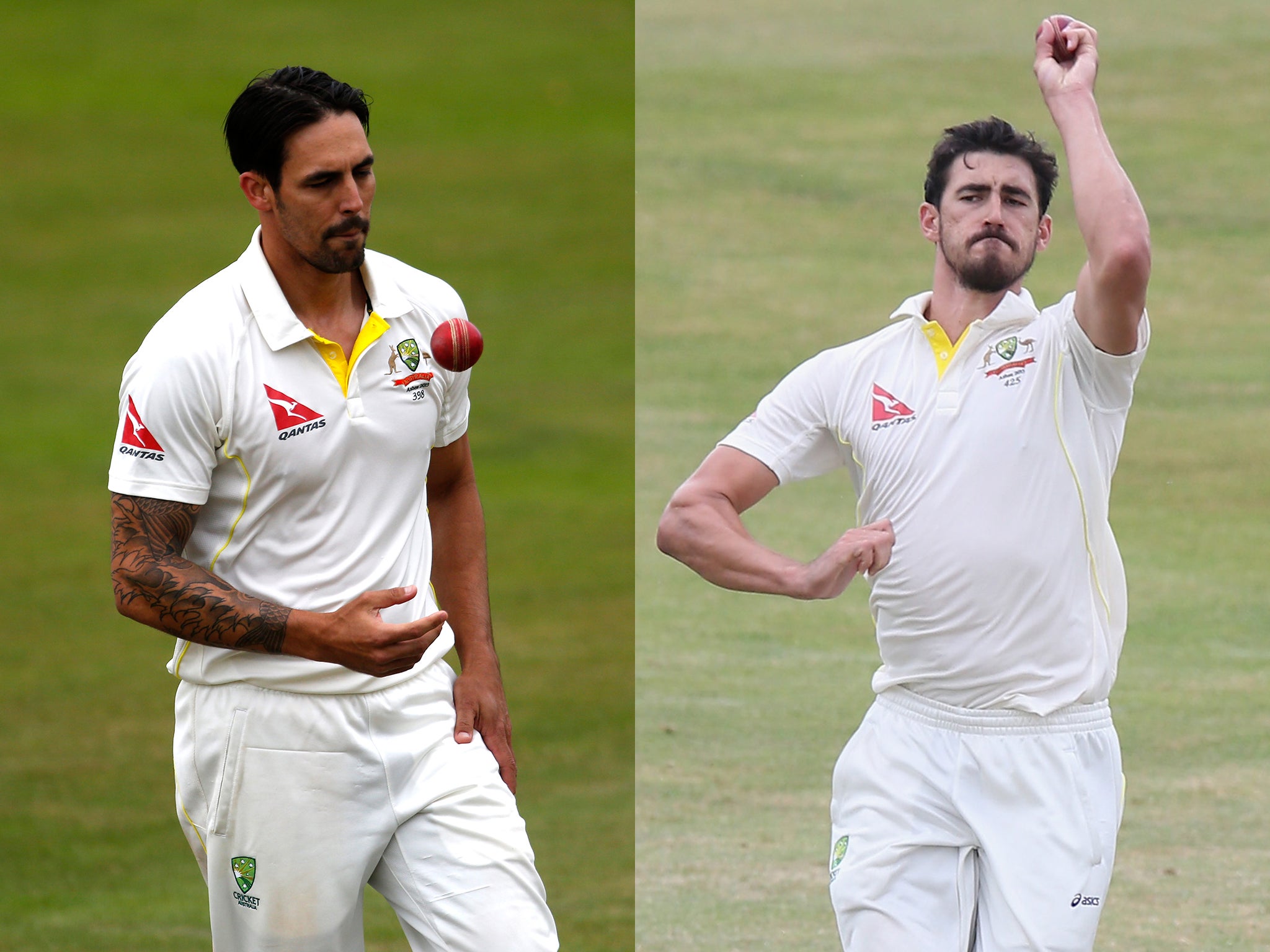Ashes 2015: Mitchells Johnson and Starc promise hostility and pace
England’s batsmen must find a way to deal with the threat of Australia’s strike bowlers Johnson and Starc

England’s batsmen won’t simply require technique to tackle Australia’s armoury of fast bowlers this summer – they will also need courage. Scarred by the experience of facing Mitchell Johnson on pitches Down Under 18 months ago, the likes of Alastair Cook, Ian Bell and Joe Root will be out to banish some demons in the First Ashes Test in Cardiff this week.
Ryan Harris, of course, will be one less problem for England to worry about following the announcement of his retirement through injury yesterday. But there is still plenty to occupy English thoughts.
Johnson, together with fellow left-armer Mitchell Starc, will waste little time in reminding England’s top order that they pose a threat to their well-being as well as their wicket.
High pace remains international cricket’s most prized weapon. One member of that England Ashes touring party 18 months ago confided to me in the immediate aftermath of that series that the scene in the dressing room after the First Test in Brisbane, when Johnson took nine wickets in the match, was like nothing he had seen before. Some batsmen were, he said, just sat with heads in hands wondering how on earth they were going to combat Johnson’s 95mph thunderbolts.
The main issue facing England’s batsmen wasn’t just Johnson’s extraordinary pace but also the fact that they were so unused to being asked questions that, quite simply, they could not answer.
On these pages last week, Bob Willis revealed that the England batsmen being bombarded by Denis Lillee and Jeff Thomson on the 1974-75 tour Down Under faced similar hostility – and without any of the protection afforded to the modern-day player.
The margins of defeat in four of the first five Tests of that series were enormous, mirroring those suffered by England two winters ago. Lillee and Thomson, like Johnson a generation later, simply bullied England into submission.
That, of course, will be harder to achieve on pitches that will offer less assistance than Johnson and Starc are used to back home, but the former certainly showed during the one-day series in 2013 – and again at Canterbury last week – that his pace can travel well.
“Mitchell Johnson is capable of bowling quick in any conditions and in any part of the world,” says the former Australia coach Mickey Arthur. “He hasn’t had the easiest of times in England before but he’ll be wiser from his experiences of playing in 2009.” His lack of control then brought him match figures of 3 for 200 in the Second Test.
Michael Carberry, who, 18 months ago, opened against Johnson’s searing pace Down Under, saw scant evidence of Johnson’s misfiring radar during the Ashes whitewash. He coped as well as any England batsman did, more often than not seeing off Johnson’s first spell while wickets tumbled around him, but he admits that facing Johnson posed as many mental questions as physical ones.
“I would be lying if I said that there are times when someone is bowling high pace that you’re not thinking about how to survive, rather than thinking about hooking,” he says.
“I guess the art of batting is being able to shift the pressure and not let the bowler consistently bomb you towards the head. You have to find a way of dealing with it. I don’t think I would have faced anyone quicker than Johnson. Right through the Ashes his pace was unbelievable throughout the day. He was hitting 145 [kph] consistently. Freddie [Flintoff] in his pomp was right up there, Shoaib Akhtar too and Brett Lee. I’ve faced them all in my time, but pace is the only thing you have to modify your game to deal with.
“It tests your technique and it’s a test of your ticker – being able to stand there and take it. Right now, Johnson is probably out there on his own in terms of quick bowlers. From a crowd point of view I can imagine it’s an exhilarating sight.”
The same could be said for the brutally mesmeric West Indies pace attack that left batsmen battered and bruised for well over a decade, from the mid-1970s to the early ’90s.
The leader of that attack says physical intimidation remains a fast bowler’s most valuable asset. “I don’t care what people say, people tend to underestimate physical threat,” says Michael Holding. “I think most people are beginning to recognise that it is part of the game now, and that plays on batsmen’s minds.
“You have bowlers who can swing the ball from outside leg to outside off and from outside off to outside leg, but a batsman will always cope with that better than someone who is threatening them physically.”
Of Australia’s two main bowlers in the forthcoming Ashes series, Holding believes that Starc could be the danger man. “I expect Mitchell Starc to be a bigger factor than Mitchell Johnson, to be honest,” he says.
“Starc is not quite as quick as Mitchell Johnson but he’s still quick and he does a lot with the ball too. He offers everything.”
Starc’s nine wickets against Essex suggest he is hitting form at just the right time, while the back-up bowling of Peter Siddle, Josh Hazlewood and new call-up Pat Cummins hints at the strength in depth enjoyed by a team who will start this series as favourites. But, after showing their steel against New Zealand, Trevor Bayliss’s new-look England do look as though they have the stomach for the fight.
Sky Sports will show every ball of the Ashes summer live from this Wednesday
Join our commenting forum
Join thought-provoking conversations, follow other Independent readers and see their replies
Comments
Bookmark popover
Removed from bookmarks